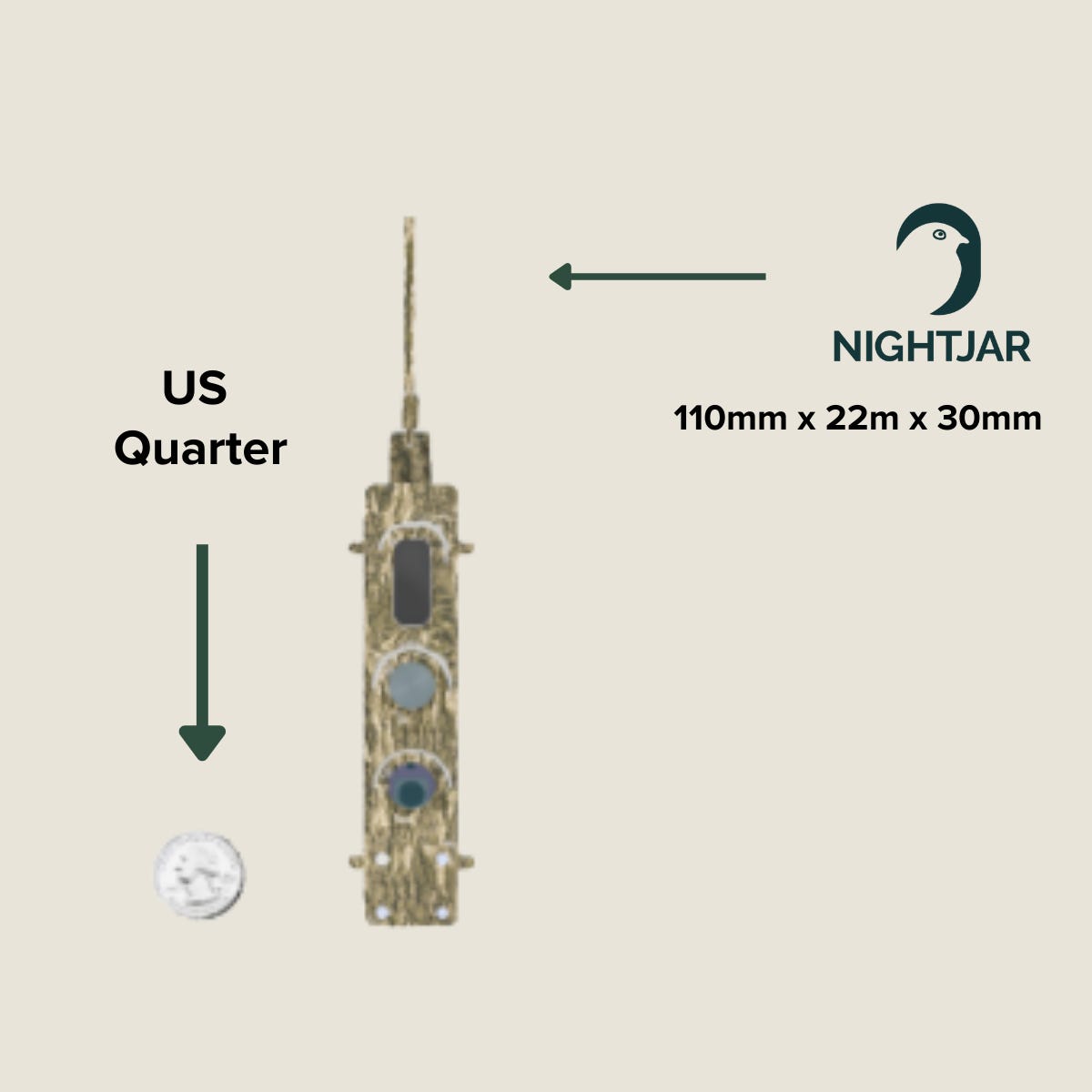🌏 The Biodiversity Accelerator+ 2022 Cohort Company: Nightjar
Enabling the rapid detection and response to environmental crime.
TL;DR - Nightjar makes enforcing wildlife crime more efficient with its AI-enabled, real-time camera alert system, that can also be used to detect wildlife species. Each camera saves conservation park management thousands of dollars in untargeted ranger patrols. They’re still gearing up to launch their website, but stay tuned to find out more!
Laws to protect vital habitats are critical, but without effective enforcement against illegal land clearing and poaching, their utility is limited. Think of any national park, and the image of a ranger team may come to mind.
These teams are critical to protecting the wildlife species that lie within - habitat loss and the wildlife trade are the biggest drivers of the biodiversity crisis today, more so than climate change - but patrolling for conservation is a dangerous job. Not only is their work intensively laborious (they have to spend huge amounts of time constantly patrolling large areas to catch illegal activity), they may also be met with aggression, or be outnumbered as they intervene to halt these wildlife crimes.
Unfortunately, the stand-alone camera traps currently widely used in conservation monitoring and wildlife research are unable to be used to help these rangers out. They’re just too cumbersome, and their batteries die fast, within a week at times. The images they capture have to be physically retrieved from SD cards, often long after the illegal entries have already occured. They capture photos of absolutely anything that moves.
💪 Small and mighty - An AI-enabled camera alert system
Nightjar (previously Wildtech @ RESOLVE) has solved all these issues with its remarkable AI enabled-camera alert system called TrailGuardAI.
Its small infra-red camera is:
👉🏼 40x smaller than conventional camera traps
👉🏼 can send real-time image alerts even in remote areas lacking cell connectivity.
👉🏼 can take angled images from up to 5 m high, making it easily camouflaged in trees to avoid detection, and
👉🏼 has a battery life of over 2 years or more.
The real hallmark of TrailguardAI which makes all of this possible, however, is its embedded AI, which identifies target species of interest (in this case, humans) and sends real-time images discriminately to park rangers, allowing them to deploy their limited numbers more strategically to intervene only when necessary, and to ensure they are prepared for the people they will be up against. An early version of TrailGuardAI rapidly paid dividends yielding 30 arrests and the seizures of over 1,300 pounds of bushmeat along with many snares, weapons, and vehicles used by poachers.
Tigers detected at night and during the day by Trailguard AI. Image Credit: NTCA, Madhya Pradesh Forest Department, Global Tiger Forum, and RESOLVE
The same technology can also be deployed strategically to detect other species of interest, such as tigers, to proactively prevent human-wildlife conflict on the outskirts of conservation areas, and the team has already developed an impressive number of highly accurate models for different species. While they’ve already had strong market interest from conservation partners for their anti-logging and poaching applications, the potential for expansion into other uses is intriguing as well!
The team at Silverstrand likes Nightjar as we clearly see how they are addressing a big pain point in conservation that few others are addressing quite this way, and we’ve been really heartened to see how far they have come in such a short period of time. We’re looking forward to see all the ways they will continue to grow.
Want to learn more? Check out the website of its partner NGO, RESOLVE, and also be sure to read their feature on Mongabay.






